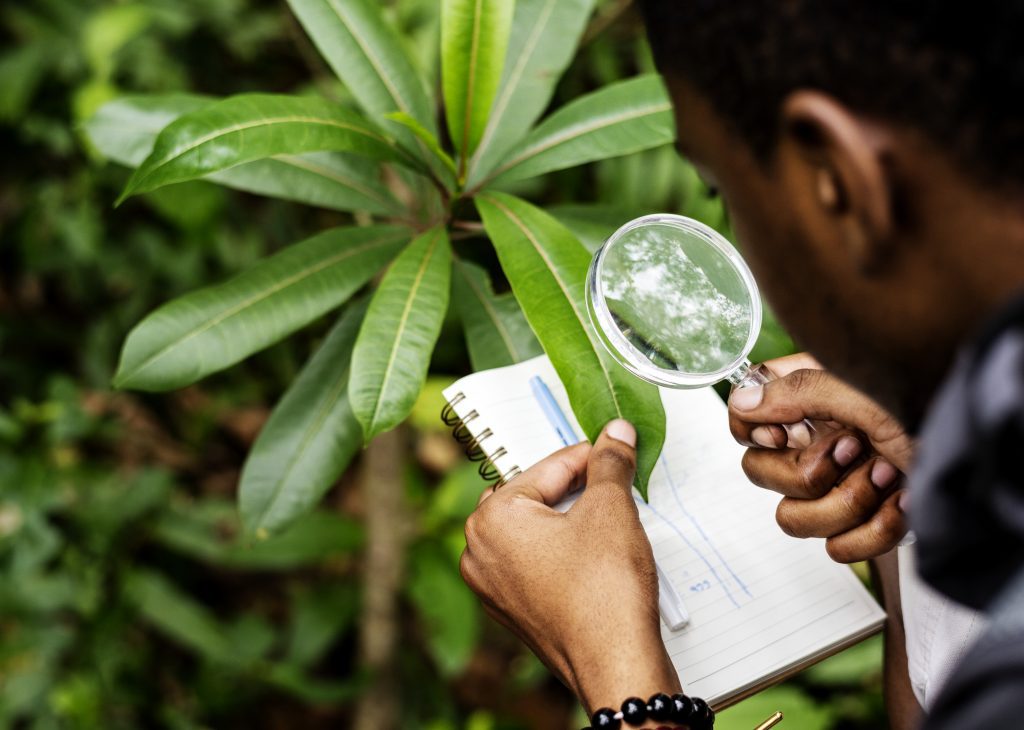Adverts
There is a huge variety of plants on our planet, revealing that we have a beautiful natural wealth. This diversity of plants is so great that we can say that it is quite unlikely, not to say impossible, for a person to be able to recognize them all and know details about each one of them, do you agree? But that doesn't mean that we can't identify them masterfully, and to make this task easier, we have technology at our disposal!
Well, thanks to the technological advances of the digital age in which we live, we have at our fingertips some application options specifically designed to identify plants, providing not only information such as species and popular name, but also details about their origin. and suitable climate for the identified plants, for example. If you are interested in the subject, continue reading this article, as here you will find a lot of relevant information on the topic, as well as suggestions for plant identification applications.
See what else you'll find in this article:
A little about the world's flora
The world's flora is a fascinating mosaic of biodiversity, an intricate fabric of life that stretches across our planet's vast and varied ecosystems. From lush tropical jungles to vast plains, from deep oceans to arid deserts, the global flora is a celebration of adaptation and evolution over millennia.

Vast and diverse, our flora is a biological treasure that houses an incredible variety of plants, from the microscopic to the majestic. It is estimated that there are between 300,000 and 400,000 known plant species, and this number continues to grow as new discoveries are made in less explored ecosystems.
The distribution of flora is influenced by a variety of factors, including climate, topography and evolutionary history. Tropical forests, for example, are home to a great diversity of plant species due to favorable climatic conditions and constant sunlight. In contrast, arid regions have unique adaptations, such as succulent plants, capable of storing water to face water scarcity conditions.
The interconnection between the world's flora and humanity is profound, as plants provide food, medicine, building materials and play a crucial role in regulating the global climate. However, human activity, such as deforestation and climate change, puts botanical diversity at risk, threatening many species with extinction. It is therefore essential to preserve and understand the world's flora, not only to maintain biodiversity, but also to ensure the sustainability and survival of interconnected ecosystems.
The ongoing study of global flora is a fascinating journey that reveals the complexity and wonder of the plant kingdom, highlighting the importance of protecting and respecting our natural environment. And amidst this, it is extremely important to identify the plants that surround us, but why exactly?
How important is plant identification?
Plant identification plays a crucial role in several areas, going beyond the simple recognition of species in our daily lives. Its importance goes beyond botanical knowledge, as this is an essential practice in several disciplines, contributing to sustainability, conservation and understanding of the natural world in which we live.
Here are some of the reasons why plant identification is so important:
- Agriculture and horticulture: In agriculture, identifying plants is essential for crop management, as knowing the different species and varieties helps in the application of appropriate agricultural practices, from planting to pest and disease control.
- Biodiversity conservation: Identifying plants is essential for monitoring and conserving biological diversity. Knowledge of the species present in a given area is crucial for implementing conservation and ecosystem protection strategies.
- Medicine and scientific research: Many plants have medicinal properties, and correct identification is vital for pharmaceutical research. Furthermore, understanding botanical diversity contributes to scientific studies and discoveries in various disciplines, such as botany, ecology and genetics.
- Environmental education: Plant identification is a valuable tool in promoting environmental education. Connecting people with nature and teaching them to recognize the plants around them contributes to raising awareness about the importance of biodiversity and environmental preservation.
- Hobbies and recreation: For gardening enthusiasts, bird watchers and nature lovers, plant identification is an essential part of the hobby. This enriches the outdoor experience and fosters a greater appreciation for local flora.
- Invasive and pest control: Identifying plants is crucial for controlling invasive species that can harm native ecosystems. It is also vital for monitoring agricultural pests, enabling quick and effective responses.
- Landscaping and urban design: In landscaping, landscape architecture and urban design, plant identification is essential to choose the most suitable species for a given environment, taking into account factors such as climate, soil and aesthetics.
We saw above that plant identification is of great importance for several sectors, such as education, medicine, agriculture, etc. But how can this identification be made? Is using technology really better than traditional methods? And what would these methods be? Don’t worry, we will clarify these questions below!
Traditional x technological methods
Plant identification has undergone significant evolution, contrasting traditional methods with innovative technological approaches. Traditional methods generally involve consulting botanical guides, taxonomic keys, and the expertise of specialized botanists. On the other hand, technological methods incorporate advances such as image recognition and machine learning algorithms for more efficient identification.
Traditional methods have their advantages, mainly in the reliability of human knowledge. Experienced botanists can observe subtle morphological features such as leaves, flowers, fruits, and growth patterns to accurately determine the species. However, this approach requires specialized skills and can be time-consuming, especially when dealing with a wide diversity of plants.

On the other hand, technological methods offer a quick and affordable alternative. Plant identification apps, for example, allow users to take a photo of an unknown plant and instantly receive information about it. These tools use image recognition algorithms, based on vast libraries of data, to compare visual characteristics and provide accurate identification in seconds.
However, technological methods also face challenges. Accuracy may vary based on image quality and plant complexity. Furthermore, some species may be visually similar, making it difficult to distinguish them through image analysis. Therefore, complementarity between traditional and technological methods is often recommended to obtain more reliable results.
The integration of both approaches highlights a promising avenue for plant identification. Human expertise combined with technological efficiency can improve the accuracy and accessibility of this process. Continuous evolution in this area promises a synergistic collaboration between botanical tradition and technological innovation, benefiting researchers, nature enthusiasts and the preservation of biodiversity.
Machine learning and botanical identification
Machine learning (ML) revolutionizes botanical identification by leveraging advanced algorithms that can analyze large data sets and learn complex patterns. In the context of plant identification, ML is often used in image recognition systems, where algorithms learn to distinguish specific visual features of different species.
Plant identification applications that incorporate machine learning generally work as follows: upon receiving an image of a plant, the algorithm compares visual characteristics, such as the shape and arrangement of leaves, flowers and other morphological details, with a database vast and diverse. This database is built by training the algorithm with thousands of images of previously identified plants.
The big benefit of ML in botanical identification is the ability to handle a huge variety of shapes and patterns. Unlike traditional approaches, which can be limited by human experience and specific taxonomic standards, ML can identify subtleties that may escape the untrained eye.

Furthermore, ML's continuous learning is a significant advantage because as more data is fed into the system, it improves its identification ability, becoming more accurate over time. This is particularly useful in dynamic ecosystems, where new species may be discovered or the characteristics of existing species may vary. However, it is important to highlight that the success of ML in plant identification depends on the quality and diversity of the dataset used in training. A robust and representative database is crucial to ensuring the accuracy and reliability of the system.
Ultimately, machine learning transforms botanical identification, providing an efficient and scalable approach. This technology not only speeds up the identification process, but also expands our understanding of botanical diversity, contributing to the conservation and preservation of the environment.
Top Plant Identification Apps
Modern technology has brought a revolution to nature enthusiasts, gardeners and curious people around the world, allowing them to identify plants with ease through specialized apps. These apps use a combination of image recognition and machine learning to provide accurate identifications and detailed information about a variety of plants. Here are six notable apps that can enhance your experience with the plant kingdom:
- PlantSnap:
- Platforms: Android, iOS
- Resources: PlantSnap is a powerful tool that uses artificial intelligence to identify plants from photos. Simply take a picture of the leaves, flowers or fruits, and the app provides detailed information about the species. PlantSnap's extensive global database makes it easy to identify plants in different regions.
- PictureThis:
- Platforms: Android, iOS
- Resources: PictureThis is a plant identification application that stands out for its user-friendly interface and ability to provide educational information. In addition to identification, the app offers gardening tips and details about the specific care of each plant. It is an excellent choice for anyone looking to learn more about the world of plants.
- iNaturalist:
- Platforms: Android, iOS
- Resources: iNaturalist is more than just a plant identification app; is a global community of nature observers. Users can photograph and identify plants, contributing to scientific biodiversity research projects. The social interaction and collaborative aspect make iNaturalist a unique option for anyone who wants to get involved in citizen science.
- Unknown Flora:
- Platforms: Android, iOS
- Resources: Based on machine learning, Flora Incognita offers an intelligent approach to plant identification. In addition to accurate identification, the application provides information on the species' geographic distribution and morphological details. Its intuitive interface makes it accessible to users of different levels of botanical expertise.
- Leaf snap:
- Platforms: iOS
- Resources: Developed by researchers from renowned universities, Leafsnap specializes in identifying trees from photographs of their leaves. Leaf recognition technology allows for accurate identification, and the app also offers high-resolution images for easy comparison.
- SmartPlant:
- Platforms: Android, iOS
- Resources: SmartPlant is not just an identification app, but also a personalized gardening companion. In addition to identifying plants from photos, the app offers specific advice on caring for each species. Users can track their plants' growth and receive personalized notifications about watering, fertilizing and other care.
Did you like this content?
These applications reflect the diversity of approaches to plant identification, from using advanced algorithms to integrating communities of nature enthusiasts. When choosing an app, it's important to consider your specific needs, such as the geographic region you are in, the depth of information you want, and whether you are interested in participating in citizen science projects. Take advantage of the fact that plant identification is no longer a task exclusive to specialists, but an experience available to everyone, and choose your app!




